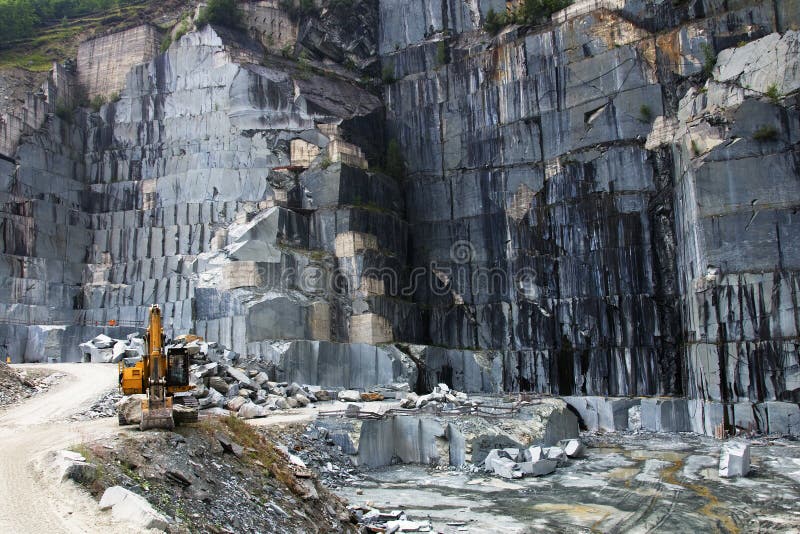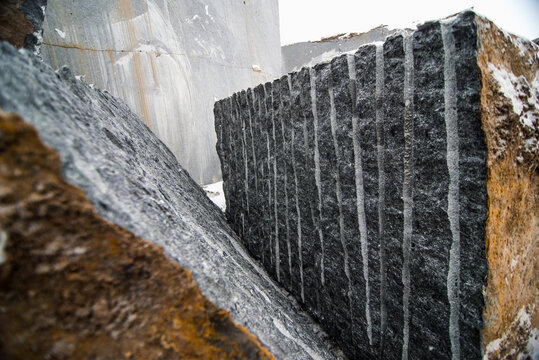Unearthing the Rich History and Sustainable Practices of Granite Quarrying
As we base on the precipice of revealing the complex tapestry of granite quarrying, a trip via time discloses not just the physical act of drawing out stone but likewise the social and historic value woven into the very material of this method. From the ancient beginnings that laid the foundation for contemporary quarrying methods to the sustainable practices that are forming the future of this sector, each chisel mark on granite surfaces narrates waiting to be uncovered (granite quarries in south africa). The legacy of granite quarrying stretches far beyond plain removal; it is a testament to human ingenuity, resilience, and the enduring appeal of this marvelous stone
Ancient Origins of Granite Quarrying
Dating back to old human beings, the method of quarrying granite has been an important part of human background and architectural advancement. The earliest evidence of granite quarrying days back to ancient Egypt, where large pyramids and elaborate sculptures were crafted from this resilient rock. The Egyptians utilized primitive devices to remove granite blocks from quarries, showcasing the relevance of this product in their monumental building and constructions.
Progressing in history, the Greeks likewise made considerable payments to the quarrying of granite. The Greeks utilized granite in various architectural marvels, such as holy places and statuaries, demonstrating their ability in shaping and sculpting this hardy stone. The Romans further improved the methods of quarrying granite, utilizing sophisticated tools like knives and hammers to extract and form granite for their iconic frameworks.
Through the centuries, the technique of quarrying granite has advanced, with contemporary innovations improving performance while preserving the classic charm of this natural rock - granite quarries in south africa. From old human beings to modern building contractors, the tradition of granite quarrying continues to shape our world
Evolution of Quarrying Methods
The development of quarrying techniques has actually been marked by a constant development towards better effectiveness and accuracy in drawing out granite. Early quarrying strategies involved hand-operated labor with basic devices such as knives, hammers, and wedges to draw out granite blocks from the planet.
In even more current times, the advent of equipment revolutionized the quarrying market, enabling faster removal prices and raised productivity. Technologies such as diamond cable saws, high-pressure water jets, and pneumatically-driven drills have actually ended up being conventional in modern-day quarries, permitting precise cutting and minimized waste. Innovations in computer-controlled equipment and 3D modeling have enhanced quarrying procedures, leading to minimal environmental effect and enhanced sustainability techniques. As the need for granite proceeds to climb, the evolution of quarrying methods continues to be integral to meeting industry needs successfully and sustainably.
Social Significance of Granite
Granite holds an extensive cultural importance across numerous people due to its enduring visibility in architectural work of arts and respected monuments. The social importance of granite extends past its physical qualities; it embodies strength, stability, and timelessness, making it a sign of enduring heritages and traditions.

Sustainable Practices in Quarrying
Among the abundant history of granite quarrying and its cultural relevance lies an expanding emphasis on sustainable methods within the market. As ecological understanding and problems regarding resource depletion have actually increased around the world, the quarrying market has significantly accepted lasting approaches to reduce its influence on the setting and surrounding areas.

Additionally, improvement and rehab of quarry sites post-extraction are essential to sustainable practices. By restoring quarried areas to a natural or useful state, such as producing wildlife habitats or recreational rooms, quarriers can offset the environmental impact of their procedures and contribute positively to the local community.
Tradition of Granite Quarrying
With a historical backdrop soaked in workmanship and commercial development, what withstanding impact has granite quarrying left on the landscape of modern culture? The tradition of granite quarrying transcends mere extraction methods; it has formed architectural wonders, urban landscapes, and social heritage worldwide. The resilient nature of granite has actually made it a favored choice for monuments, structures, and infrastructure, standing as a testament to the ability and creativity of quarry workers throughout generations.
Furthermore, the financial footprint of granite quarrying can not be neglected. The sector proceeds to provide employment possibilities and drive neighborhood economic climates in areas where granite extraction prevails. It has additionally spurred technical improvements in quarrying techniques and tools, bring about a lot more effective and lasting methods.
In terms of sustainability, the tradition of granite quarrying includes efforts to reduce ecological impacts with recovery projects and responsible source monitoring. By stabilizing economic passions with environmental stewardship, the market aims to make sure that future generations can remain to benefit from this long-lasting Recommended Reading natural deposit.
Final Thought
